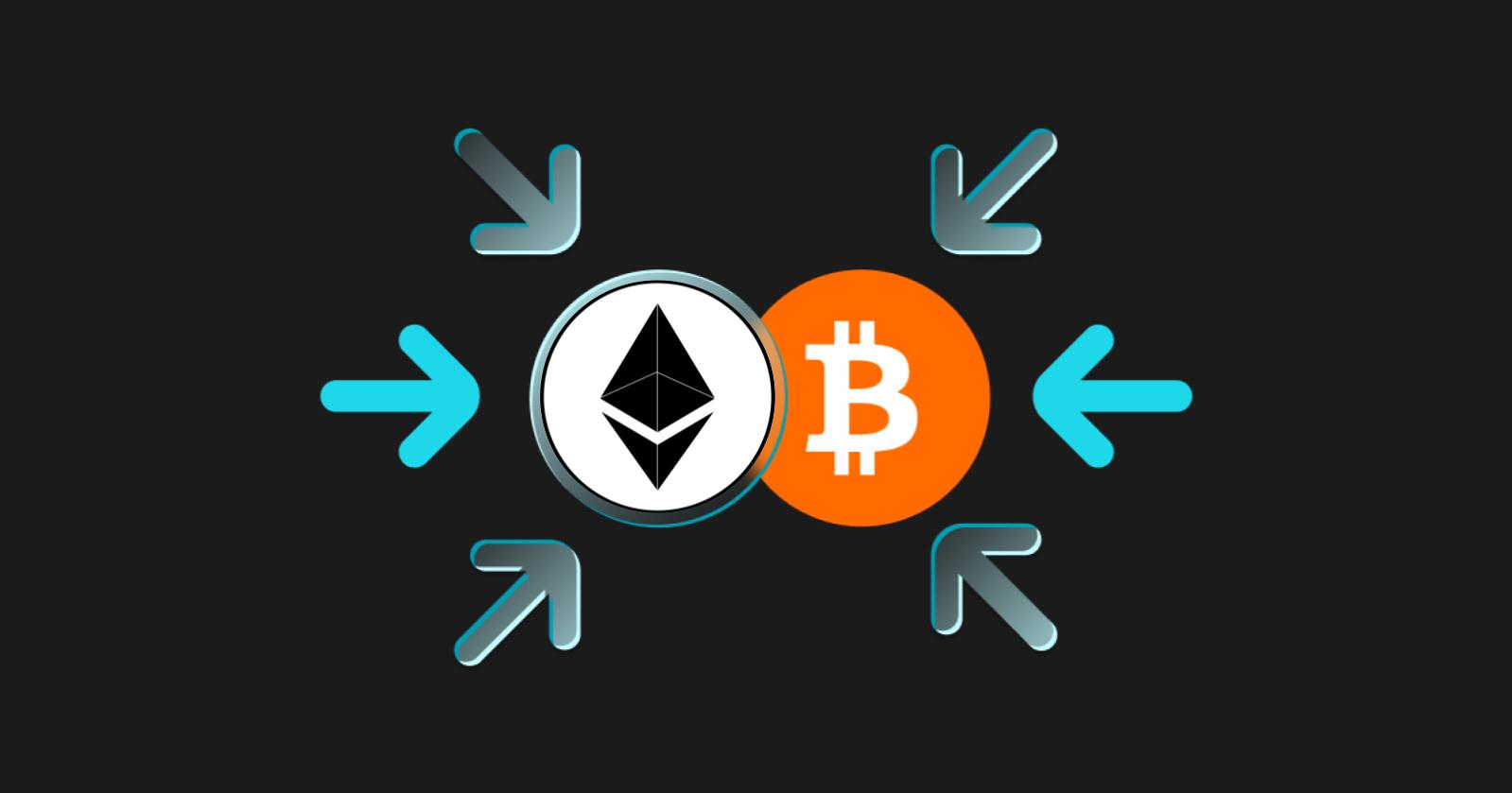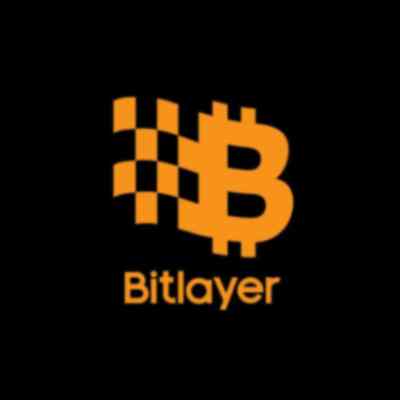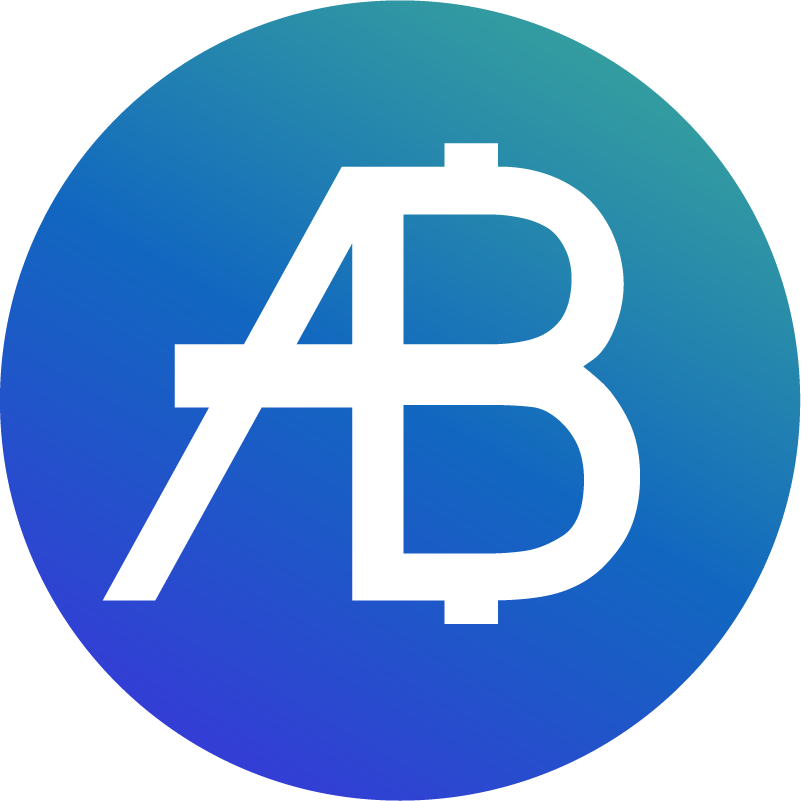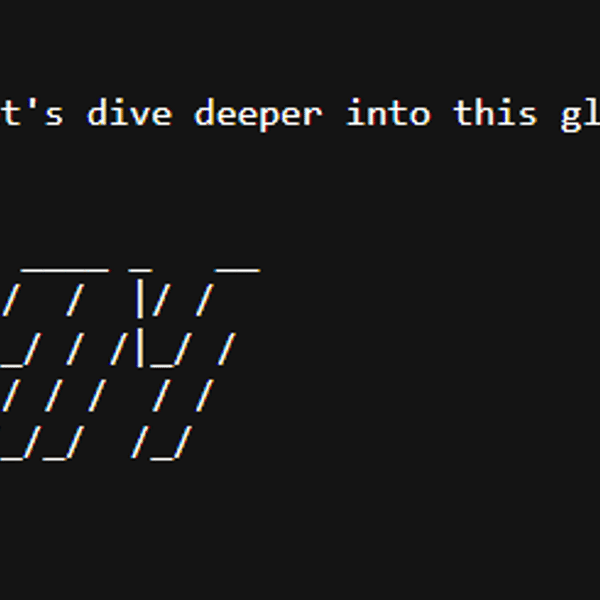Bitget:日次取引量の世界ランキングでトップ4にランクイン!
BTCマーケットシェア57.42%
現在のETHガス代: 0.5-2 gwei
ビットコイン半減期:2024年,2028年
BTC/USDT$ (NaN%)恐怖・強欲指数50(ニュートラル)
アルトコインシーズン指数:0(ビットコインシーズン)
プレマーケットに上場した通貨WLFIビットコイン現物ETFの純流入総額(+$178.9M(1日)、+$34M(7日))。6,200 USDT相当の新規ユーザー向けウェルカムギフトパッケージ。今すぐ獲得する
Bitgetアプリでいつでもどこでも取引しましょう今すぐダウンロードする
Bitget:日次取引量の世界ランキングでトップ4にランクイン!
BTCマーケットシェア57.42%
現在のETHガス代: 0.5-2 gwei
ビットコイン半減期:2024年,2028年
BTC/USDT$ (NaN%)恐怖・強欲指数50(ニュートラル)
アルトコインシーズン指数:0(ビットコインシーズン)
プレマーケットに上場した通貨WLFIビットコイン現物ETFの純流入総額(+$178.9M(1日)、+$34M(7日))。6,200 USDT相当の新規ユーザー向けウェルカムギフトパッケージ。今すぐ獲得する
Bitgetアプリでいつでもどこでも取引しましょう今すぐダウンロードする
Bitget:日次取引量の世界ランキングでトップ4にランクイン!
BTCマーケットシェア57.42%
現在のETHガス代: 0.5-2 gwei
ビットコイン半減期:2024年,2028年
BTC/USDT$ (NaN%)恐怖・強欲指数50(ニュートラル)
アルトコインシーズン指数:0(ビットコインシーズン)
プレマーケットに上場した通貨WLFIビットコイン現物ETFの純流入総額(+$178.9M(1日)、+$34M(7日))。6,200 USDT相当の新規ユーザー向けウェルカムギフトパッケージ。今すぐ獲得する
Bitgetアプリでいつでもどこでも取引しましょう今すぐダウンロードする

アルトコインシーズン指数
最も取引されている暗号資産(仮想通貨)はどこで買えるのでしょうか?Bitgetで流動性と取引量が最も高いアルトコインを追跡しましょう。
Bitgetのアルトコインシーズン指数ページでは、暗号資産市場がアルトコインシーズンであるかについて、リアルタイムの洞察を提供しています。市場動向とアルトコインの優位性を追跡するための詳細なチャートと指数をご覧ください。
現在のアルトコインシーズン指数:
アルトコインシーズンではない - 53
過去90日間で、時価総額上位100の暗号資産のうち約53がビットコインを上回るパフォーマンスを記録しており、暗号資産市場は現在、アルトコインシーズンではないことを示しています。
53
ビットコインシーズンアルトコインシーズン
過去の価値
昨日アルトコインシーズンではない - 54
7日前アルトコインシーズンではない - 50
30日前アルトコインシーズンではない - 29
年初来高値・安値
年初来高値アルトコインシーズン - 87
2024-12-03
年初来安値ビットコインシーズン - 12
2025-03-05
最終更新
トップ100のアルトコインの過去90日間のパフォーマンス
すべての通貨の価格詳細を見る
アルトコインシーズン指数について
アルトコインシーズン指数とは?
アルトコインシーズン指数は、アルトコイン(ビットコイン以外の暗号資産)がビットコインと比較してどのようなパフォーマンスを示すかを測定するツールです。過去の価格データと市場動向から、市場の焦点がアルトコインに移っているのか、それともビットコインが中心なのかを判断します。
アルトコインシーズンの見分け方は?
通常、特定の期間(例えば90日間)にパフォーマンスが上位にある暗号資産の大半がビットコインではなくアルトコインである場合、アルトコインシーズンと見なされます。アルトコインシーズン指数は、このデータを集計し、アルトコインがビットコインを上回るパフォーマンスを示している場合は高いスコアを示し、ビットコインが優勢の場合は低いスコアを示します。
アルトコインシーズン指数の活用方法は?
アルトコインのシーズン指数は、トレーダーや投資家に様々な方法で役立ちます。
- アルトコインに対する市場センチメントの変化を見極める。
- アルトコインのパフォーマンスに基づいて市場参入または撤退のタイミングを計る。
- 市場環境の変化に応じてポートフォリオの分散を調整する。
アルトコイン市場を構成するものは?
アルトコイン市場には、ビットコイン以外のすべての暗号資産が含まれます。イーサリアムのような確立された通貨、分散型金融(DeFi)で人気のトークン、そして新興プロジェクトを網羅しています。「アルトコイン市場」とは、これらの代替暗号資産に対する投資家の関心や取引活動全般を指すことが多いです。
注目のアルトコインは?
イーサリアムは、そのスマートコントラクト機能と強力な開発者コミュニティにより、最も注目されているアルトコインの1つです。他の重要なアルトコインには、Binance Coin(BNB)、Solana(SOL)、Cardano(ADA)などがあり、それぞれがかなりのユーザーベースとユニークなアプリケーションを誇っています。
どのようなアルトコインが指数に含まれていますか?イーサリアムはアルトコインと見なされますか?
通常、アルトコインシーズン指数には、イーサリアム、XRP、Litecoin、Cardanoなど、時価総額と取引量に基づく主要なアルトコインが含まれます。はい、イーサリアムはビットコインではないため、アルトコインと見なされます。独自のブロックチェーンで独自に開発され、スマートコントラクトに焦点を当てています。
指数はどのように算出されますか?
アルトコインシーズン指数の算出方法は、通常、以下を含みます。
- 時価総額と取引量に基づいてアルトコインのグループを選択する。
- 指定された期間(通常は90日間)におけるこれらのアルトコインのパフォーマンスをビットコインと比較する。
- このデータを1つの指数値にまとめることで、現在の市場環境が「ビットコインシーズン」と「アルトコインシーズン」のどちらに一致しているかを示します。

Will Cronos Crypto Price Reach $1 After Trump's CRO Treasury Launch?
Few tokens have generated as much buzz this year as Cronos, especially in the wake of Donald Trump’s recent ventures into the crypto arena. Each major headline linking Trump or his media companies to Cronos seems to send shockwaves through the market. The past few months have offered a clear window into this phenomenon, with Cronos price action moving in lockstep with Trump-driven news.
In this article, we’ll break down what Cronos crypto is, its newly pivotal role in Trump’s crypto ventures, why it was chosen for such a significant partnership, how its price has responded to recent Trump-related headlines, and what the future may hold for Cronos crypto price prediction.
What is Cronos (CRO)?
Cronos is the native cryptocurrency that powers the Cronos blockchain, a scalable, low-cost, and interoperable platform launched in 2021. The primary goal of Cronos is to bridge key networks like Ethereum and Cosmos, allowing for seamless integration across DeFi, NFTs, and dApps. Thanks to its focus on fast transactions and minimal fees, Cronos crypto has quickly become a go-to solution for both developers and users in the rapidly growing Web3 space.
The Cronos ecosystem is built around the CRO token, which is essential for staking, transaction fees, and governance within the network. CRO holders gain benefits such as network rewards, participation in governance decisions, and exclusive perks, making the token central to the platform’s value proposition.
Cronos’ Role in Trump’s Crypto Empire
Recent news has catapulted Cronos crypto into the headlines following major alliances with Trump Media & Technology Group, the parent company of Truth Social, and a high-profile treasury deal. Trump’s strategy echoes corporate pioneers like MicroStrategy, but with a unique twist — instead of Bitcoin, Trump Media is anchoring its treasury reserves in Cronos (CRO).
This high-visibility backing means CRO isn’t just another altcoin. By integrating Cronos into its digital asset strategy, Trump Media aims to institutionalize the token, using it not only as a treasury asset but also as a core rewards mechanism across its platforms. The collaboration is set to make Cronos a foundational block in Trump’s much-publicized foray into the crypto sector — a move that has already begun fueling speculation and excitement about the future Cronos crypto price.
Cronos Crypto Price Performance After Trump Moves
Cronos crypto price has consistently shown sharp reactions to major institutional developments—especially those connected to former President Donald Trump and his business ventures.
In early July 2025, the crypto space was abuzz when Truth Social filed for its Crypto Blue Chip ETF, which included Cronos (CRO) alongside leading assets like Bitcoin and Ethereum. Upon the ETF’s announcement, Cronos crypto price rapidly surged by approximately 17%-20%, jumping from the $0.16 range to briefly test $0.19. Notably, while flagship cryptocurrencies such as Bitcoin and Ethereum saw muted price movements, Cronos outperformed its peers, underscoring just how reactive and sensitive the CRO market can be to institutional news.
Source: CoinMarketCap
Fast forward to late August 2025, and the landscape shifted again when Trump Media & Technology Group revealed its plan to anchor its treasury reserves in Cronos. Following confirmation of this landmark strategy, trading volumes for CRO soared, and the token price climbed almost 30% within hours—rising from around $0.17 to challenge the $0.22 level before seeing some profit-taking.
Cronos Crypto Price Prediction: 2025-2030
Given the recent influx of institutional attention and the possibility of further adoption within Trump’s growing crypto empire, many are closely watching Cronos crypto price forecasts. While predicting the future of any cryptocurrency carries risks, market analysts project that if current momentum continues, Cronos could reach toward the $1 level by 2025. Conservative targets estimate a range of $0.30 to $0.80 for 2025, with upside potential tied to ongoing media attention and adoption.
Looking further ahead, bullish scenarios for Cronos crypto price in 2030 suggest a range between $1.00 and $3.00, driven by mainstream institutional usage, technological upgrades, and continued integration into high-visibility platforms. Of course, volatility and regulatory uncertainty remain important factors to monitor; prices could fluctuate sharply in either direction.
Conclusion: Is Cronos Crypto a Good Investment After Trump’s Backing?
The Trump-fueled partnerships have brought unprecedented attention and potential credibility to Cronos crypto, making CRO one of the hottest tokens to watch this year. The convergence of scalability, unique cross-chain technology, and powerful industry endorsements means the Cronos crypto price could see material appreciation if these developments translate into sustained adoption.
Investors should remember, however, just as the potential for high returns exists, so too does volatility and risk. As always, perform your own research and consult with financial professionals before investing in any cryptocurrency.
FAQ
1. Is Cronos crypto a good investment?Cronos crypto has notable technological strengths and growing institutional backing. However, like all cryptocurrencies, it carries risk due to volatility. Assess your risk tolerance and investment timeline before making decisions.
2. Can Cronos crypto reach $5?While ambitious, the $5 level is speculative. It would require significant market adoption, consistent institutional interest, and broader acceptance of crypto assets globally. Current forecasts put this as a possibility only in very bullish long-term scenarios.
3. What will Cronos crypto be worth in 5 years?Predictions for Cronos crypto price in 5 years suggest a range between $1.00 and $3.00, depending on market trends, ecosystem growth, and regulatory factors.
4. What is the Donald Trump crypto coin?There is no official “Donald Trump coin”; rather, Trump and his media ventures have chosen to anchor their digital strategies and treasury reserves in established tokens such as Cronos crypto (CRO) and have also engaged in the launch of various crypto reward mechanisms.
Bitgetアカデミー2025-08-27 14:51

Dogecoin Price Slides After 8% Swing: Is It Time to Buy the Dip Before a Potential September Fed Cut as Whales Move?
The dogecoin price slipped following an 8% intraday swing, extending a choppy stretch where bears have kept the upper hand. With the dogecoin price down roughly 32.5% year-to-date and sentiment split between accumulation and distribution, investors are asking whether a potential Federal Reserve rate cut in September could reset momentum—and what big whales are doing behind the scenes.
Source: CoinMarketCap
DOGE Price Performance
Dogecoin continues to lag the broader altcoin complex. At press time, the dogecoin price hovers near $0.22, having repeatedly tested a critical support zone at $0.23. A firm rejection near $0.25—where an estimated 2.29 billion tokens changed hands—confirms heavy overhead supply and underscores the overhang on the dogecoin price.
Key near-term observations:
Resistance: $0.24–$0.25 remains a dense supply area. Rejections at $0.25 reinforce this ceiling.
Support: $0.23 has held multiple times. A clean break below opens the door to $0.21.
Structure: On the 4-hour chart, price stalled at the upper trendline of a symmetrical triangle, with $0.24 acting as immediate resistance.
Volatility and volume: During the breakdown under $0.229, volume spiked to roughly 10–12 million DOGE per minute—consistent with possible institutional distribution and stop-driven moves.
While DOGE underperforms on a year-to-date basis, short, sharp rebounds have punctuated declines—typical of a market in which liquidity pockets and sentiment shifts play outsized roles.
On-Chain Data: What Whales Are Doing
On-chain flows help explain the push-pull in price action:
Accumulation: Whales accumulated nearly 680 million DOGE in August, signaling steady long-term interest despite volatility.
Exchange inflows: A notable transfer of 900 million DOGE to Binance has raised near-term selling risk, as coins sent to exchanges can precede distribution.
Liquidity dynamics: The combination of accumulation on the way down and bursts of exchange-bound supply suggests a market oscillating between dip-buying and opportunistic selling—conditions that can keep ranges intact until a catalyst breaks the stalemate.
These flows can weigh on the dogecoin price in the short term while preserving a constructive longer-term backdrop if accumulation persists.
Price Analysis: Levels That Matter Now
Technically, DOGE retains a favorable longer-term setup even as short-term momentum softens:
Trend signals: A golden cross remains intact on higher time frames, supporting the bigger-picture bull case.
Momentum: Below $0.24, short-term momentum tilts cautious; repeated failures there keep rallies capped.
Pivots:
A sustained break below $0.23 would likely target $0.21 next, with liquidity vacuums accelerating the move.
A bounce that reclaims $0.24–$0.25 would re-ignite upside and put a breakout on the table.
Actionable levels to monitor:
Support: $0.23 (primary), then $0.21
Resistance: $0.24 (near-term), $0.25 (major)
Confirmation: A daily close back above $0.24 would be a constructive signal; a decisive loss of $0.23 would argue for patience.
To stabilize the dogecoin price, bulls need to reclaim $0.24 with expanding volume. A loss of $0.23 would likely push the dogecoin price toward $0.21, where buyers will try to reassert control.
DOGE Price Catalysts (ETF, Macro, Liquidity)
Macro policy and product headlines could determine the next trend leg:
Federal Reserve policy: A widely anticipated September rate cut, if delivered, could improve risk appetite across crypto. Easing financial conditions typically funnel liquidity into higher-beta assets, potentially lifting the dogecoin price alongside broader market leaders.
ETF narrative: While there is no approved, dedicated Dogecoin ETF at present, ETF headlines remain a key sentiment driver across crypto markets. Incremental progress on broader crypto ETFs (and any future DOGE-linked ETP discussions) can improve visibility, institutional access, and liquidity—factors that often spill over to the dogecoin price via risk-on flows.
Market leadership: Strength in Bitcoin and large-cap altcoins often precedes rotational bids into higher-volatility names. If leaders break higher, DOGE could follow once $0.24–$0.25 is cleared with conviction.
Flows and funding: Rising derivatives open interest, tightening spot-futures basis, and declining exchange reserves would be supportive. Conversely, spikes in exchange inflows—like the 900 million DOGE transfer—can cap rallies.
Is It a Good Time to Buy the Dip?
This largely hinges on time horizon and risk tolerance:
Tactical traders may look for a reactive bounce off $0.23 with tight risk controls, aiming for a re-test of $0.24–$0.25.
Swing and longer-term participants might prefer confirmation: a daily close above $0.24, or a flush into $0.21 that is quickly reclaimed on strong volume, would both improve the reward-to-risk profile.
Given current conditions, patience around key levels and close attention to on-chain exchange inflows are prudent until the market resolves.
Conclusion
DOGE’s backdrop is a tale of two tapes: longer-term structure remains constructive, but near-term momentum is capped below $0.24 and supply at $0.25. Whether the dogecoin price can sustain above $0.23 will likely define direction into September. A supportive macro turn—especially a Fed cut—plus positive ETF-related sentiment could unlock upside, while renewed exchange inflows or a break of $0.23 would argue for caution. As always, align position sizing with volatility and reassess as price, flows, and macro signals evolve.
Follow Bitget X to win 1 BTC
Disclaimer: The opinions expressed in this article are for informational purposes only. This article does not constitute an endorsement of any of the products and services discussed or investment, financial, or trading advice. Qualified professionals should be consulted prior to making financial decisions.
Bitgetアカデミー2025-08-25 18:12

Ethereum Hits ATH as Dominance Peaks — Is the “Flippening” Back on the Table?
Ethereum has just pulled off a remarkable double milestone that’s reverberating across the crypto market. Over the weekend, ETH surged to a new all-time high (ATH) around $4,951, finally eclipsing its long-standing record from November 2021. At the same time, Ethereum’s market dominance – its share of the overall cryptocurrency market capitalization – climbed to about 14.7%, marking the highest level in nearly a year.
This rare convergence of both price and market share gains underscores Ethereum’s renewed strength in 2025. It also reignites an old debate in the crypto community: could Ethereum one day overtake Bitcoin in market capitalization – a moment often referred to as the “Flippening”? While such speculation has surfaced before, Ethereum’s latest achievements have given the conversation fresh momentum.
New Highs on August 25, 2025: Ethereum’s Price and Dominance Breakout
Ethereum Price
Source: CoinMarketCap
Ethereum’s price breakout has been both swift and dramatic. On August 23–24, 2025, ETH shattered its previous peak of $4,891 (set in November 2021) and soared to roughly $4,953.73 at the top. This is the first new ATH in nearly four years, signaling that Ethereum has fully re-entered price discovery. The move coincided with a broader market rally after U.S. Federal Reserve Chair Jerome Powell hinted at possible interest rate cuts. In fact, Powell’s comments sparked an 8% ETH jump in just one hour, and the token ended that day up nearly 15% — clear evidence that macroeconomic cues are helping fuel crypto momentum.
Just as striking is Ethereum’s rise in market dominance, now sitting at around 14.5–15% of the global crypto market cap. That means nearly one in every seven dollars invested in digital assets is tied to ETH. Today’s figure of 14.65% marks the highest dominance level of 2025, reflecting how Ethereum has strengthened its position relative to other assets. Bitcoin, by contrast, has seen its dominance dip to about 58%, the lowest since early 2025.
The divergence in performance has been especially sharp in recent weeks: Ethereum climbed over 23% in the past month, while Bitcoin actually slipped about 5%. This rotation of capital has boosted Ethereum’s presence and fueled the growing narrative that ETH, not BTC, is leading this leg of the 2025 bull market.
Four Years in the Making: Ethereum Finally Breaks Its 2021 Peak
Ethereum’s $4,953.73 ATH is more than just a number — it’s a milestone that highlights how far the asset has come since the last bull cycle. Back in November 2021, ETH peaked at around $4,891, and it has taken nearly four years for that record to be broken. Clearing that psychological barrier signals a new phase of growth, putting Ethereum firmly back into price discovery territory.
When comparing market dominance, the story becomes more layered. Ethereum’s current 14–15% dominance is a strong rebound for 2025, but it still falls short of earlier highs. During the ICO boom of early 2018, ETH briefly captured nearly one-third of the entire crypto market, coming close to Bitcoin’s dominance. In the 2021 cycle, Ethereum’s share hovered in the 20–22% range, boosted by the explosion of DeFi and NFTs.
By contrast, the bear markets that followed pushed ETH’s dominance into single digits, hitting lows of about 7–8% in early 2025. From that trough, Ethereum’s recovery to nearly 15% dominance today represents a significant turnaround — the strongest in over a year.
In short, while Ethereum’s new ATH of $4,953.73 surpasses 2021’s record of $4,891, its market share is still more modest compared to historic peaks. That underscores two realities: the crypto market has broadened with more competitors now, and Bitcoin remains a formidable anchor at the top. Still, ETH’s ability to score both a price record and a dominance rebound in tandem shows that momentum is firmly on its side.
Drivers Behind Ethereum’s 2025 Surge
Ethereum’s rally to a new ATH and a dominance rebound hasn’t come out of nowhere. Several powerful forces are converging to push ETH higher in 2025:
1. Institutional Adoption and Inflows
Institutional capital has increasingly turned toward Ethereum. The launch of spot ETH ETFs in 2025 attracted billions of dollars in inflows, with some single-day numbers topping $1 billion — even surpassing Bitcoin ETF flows. Major firms like BlackRock have positioned Ethereum as a core crypto investment vehicle. Public companies have also jumped in: BitMine and SharpLink reportedly hold billions in ETH, while dozens of firms collectively staked more than 4 million ETH. These moves signal long-term confidence and create steady buy pressure.
2. DeFi and Network Growth
Ethereum’s on-chain activity is booming again. Daily transactions are above 2.4 million, with 1.2 million active addresses, while average fees remain manageable compared to the sky-high costs of 2021. Meanwhile, total value locked (TVL) in DeFi has surged back to about $97 billion, the highest since late 2021. This resurgence shows that Ethereum is still the beating heart of decentralized finance and Web3 applications.
3. Staking and Supply Dynamics
Post-Merge, staking has become a central pillar of Ethereum’s strength. Over 36 million ETH — nearly 30% of total supply — is locked in staking contracts, reducing circulating supply and selling pressure. Staking yields of ~4–6% make ETH attractive to both retail and institutional investors. At the same time, EIP-1559 continues to burn fees, occasionally making ETH’s supply deflationary. These dynamics combine to make ETH a yield-bearing, increasingly scarce asset.
4. Macro Tailwinds
Global macro conditions have also boosted Ethereum. The Federal Reserve’s more dovish tone in August 2025 — hinting at rate cuts — triggered a wave of risk-on appetite. ETH, with its yield through staking, stood out as a hybrid between tech stock growth and bond-like income. As inflation expectations cooled, Ethereum’s investment case became even more compelling for capital rotating out of traditional markets.
Is the “Flippening” Back in Conversation?
With Ethereum setting a new all-time high of $4,953.73 and lifting its market dominance to nearly 15%, the long-discussed idea of the “Flippening” — ETH overtaking Bitcoin in market capitalization — is back in the spotlight. The debate isn’t new. In late 2017, ETH’s market cap climbed to about 83% of Bitcoin’s, coming closer than ever to flipping BTC. During the 2021 bull run, Ethereum’s dominance surged to the 20–22% range, fueled by the rise of DeFi and NFTs, before fading again in the bear market.
Now in 2025, Ethereum’s resurgence has revived the narrative. ETH has outperformed Bitcoin sharply, gaining more than 23% in the past month while BTC slipped 5%. Staking rewards, strong ETF inflows, and network growth are fueling Ethereum’s momentum and narrowing the gap. Still, even at ~15% dominance, ETH’s market cap is only about one-quarter of Bitcoin’s. To truly flip BTC, Ethereum would need to quadruple its share or see Bitcoin’s dominance collapse — a scenario most analysts see as long-term rather than imminent. For now, the flippening is best viewed as a serious conversation, not a prediction, but ETH hasn’t been this close to the spotlight in years.
Ethereum vs. Bitcoin: Dominance Trends in 2025
Bitcoin Dominance Chart
Source: CoinMarketCap
One of the clearest signals of Ethereum’s rising strength is its dominance chart. In early 2025, ETH’s share of the market sank to multi-year lows around 7–8%, as investors piled into Bitcoin during uncertain macro conditions. Since then, Ethereum has nearly doubled its market share, climbing to about 14.65% in August, the highest level in over a year. At the same time, Bitcoin’s dominance has slipped to ~58%, its lowest of 2025.
This shift highlights a rotation of capital. Over the past month, ETH surged 23% while BTC fell 5%, pushing ETH.D (Ethereum dominance) to new yearly highs. On-chain data shows whales and institutions accumulating ETH, with exchange balances at multi-year lows as coins flow into staking or cold storage. Meanwhile, Bitcoin has been consolidating after its own rally, leaving room for ETH to capture momentum.
The ETH/BTC ratio also reflects this trend, hitting multi-month highs as Ethereum gains value relative to Bitcoin. Analysts note that ETH’s rising dominance often precedes broader altcoin rallies, suggesting Ethereum’s run could ignite a wider altcoin season. Still, the dominance gap remains wide, and Bitcoin tends to recover share when markets cool. For now, the charts show a clear story: in 2025, Ethereum is on the upswing, steadily narrowing the gap with its long-time rival.
Forward-Looking: What Should Investors Watch Next?
Ethereum’s climb to a record $4,953.73 and nearly 15% market dominance raises a tantalizing question: how far can this momentum go? Upcoming Ethereum upgrades, expanding ETF adoption, and the steady pull of staking yields all suggest ETH has room to grow. But markets thrive on uncertainty. Could a sudden macro shock, or a renewed Bitcoin rally, flip the script just as quickly as Ethereum flipped its old record?
What makes this moment fascinating is the sense of possibility. Ethereum has rarely looked stronger — it’s drawing in institutions, fueling DeFi’s revival, and holding more of the crypto market than it has in over a year. Yet the flippening debate lingers just out of reach, a reminder that ETH still has a long climb to rival Bitcoin’s dominance. The coming months won’t just test Ethereum’s strength; they’ll reveal whether we’re witnessing the start of a deeper power shift in crypto, or simply another thrilling act in Bitcoin and Ethereum’s ongoing rivalry.
Follow Bitget X Now & Win 1 BTC – Don’t Miss Out!
Disclaimer: The opinions expressed in this article are for informational purposes only. This article does not constitute an endorsement of any of the products and services discussed or investment, financial, or trading advice. Qualified professionals should be consulted prior to making financial decisions.
Bitgetアカデミー2025-08-25 16:55
アルトコインの種類
アルトコインは機能やコンセンサスの仕組みが異なり、その違いによって複数のカテゴリーに分類されます。特に重要なカテゴリーは以下の通りです。
マイニングベースのアルトコインマイニングベースのアルトコインは、トランザクションを検証し、ブロックチェーンに追加するためにマイニングプロセスに依存する暗号資産です。マイニングは、アルトコインの設計によって、プルーフ・オブ・ワーク(PoW)のコンセンサスメカニズムを使用して行うことができます。人気のマイニングベースのアルトコインの例としては、ビットコイン、Litecoin、Moneroなどがあります。
パブリックチェーンコインパブリックチェーンコインは、イーサリアム(ETH)、Solana(SOL)、Avalanche(AVAX)などのブロックチェーンプラットフォームをサポートし、運用するために使用されるネイティブトークンです。これらのトークンは主にネットワーク上の取引手数料、スマートコントラクトの実行、ネットワークガバナンスへの参加に使用されます。
ステーブルコインステーブルコインは、ドルやユーロのような法定通貨の価値に密接に連動します。これにより、ユーザーは価格の安定性を維持しながら、迅速かつコスト効率よく価値の移動が可能になります。
ユーティリティトークンユーティリティトークンは、特定のブロックチェーンプラットフォームや分散型アプリケーション(DApp)内の製品やサービスへのアクセスのために使用されます。例えば、分散型クラウドプラットフォームのストレージスペースを取得したり、分散型金融(DeFi)サービスに参加したりするため、ユーティリティトークンの取得が必要となる場合があります。
セキュリティトークンセキュリティトークンはブロックチェーンベースのデジタル資産で、従来の証券と類似点があります。所有権、配当金、債券の形でエクイティを提供する場合もあります。セキュリティトークンは通常、セセキュリティ・トークン・オファリング(STO)やイニシャル・エクスチェンジ・オファリング(IEO)を通じてローンチされます。
ミームコインミームコインは、主にインターネット上で話題となっているミームやソーシャルメディアを通じて人気を集める暗号資産です。それらは、コミュニティ主導のトレンド以上の重要な実用性や価値を欠いている場合が多くあります。代表的な例としては、DOGE、SHIB、PEPE、GOATなどが挙げられます。
Bitgetに新規上場されたアルトコイン
| 名前 | 最終価格 | 変更 | 24時間の取引量 | 上場日 | 取引する |
|---|---|---|---|---|---|
 LIVE/USDT | 0.02414 | -30.91% | 2.21M | 2025-08-28 | 取引する |
 CAMP/USDT | 0.10103 | +4.95% | 18.43M | 2025-08-27 | 取引する |
 BTR/USDT | 0.0692 | -14.66% | 6.97M | 2025-08-27 | 取引する |
 TOWN/USDT | 0.00737 | -22.09% | 1.47M | 2025-08-26 | 取引する |
 ARIA/USDT | 0.08763 | +32.43% | 2.61M | 2025-08-21 | 取引する |
 YZY/USDT | 0.534 | -0.37% | 649.99K | 2025-08-21 | 取引する |
 SAPIEN/USDT | 0.13187 | -7.65% | 3.66M | 2025-08-20 | 取引する |
 DGC/USDT | 0.00001225 | -0.89% | 612.42K | 2025-08-20 | 取引する |
 TCOM/USDT | 0.018714 | +10.72% | 198.47K | 2025-08-15 | 取引する |
 PUBLIC/USDT | 0.05687 | +1.93% | 1.64M | 2025-08-15 | 取引する |
 BSTR/USDT | 0.00203 | +3.04% | 214.63K | 2025-08-14 | 取引する |
 WAI/USDT | 0.05018 | +6.65% | 1.43M | 2025-08-12 | 取引する |
 XCX/USDT | 0.03942 | -7.72% | 183.31K | 2025-08-11 | 取引する |
 BOSS/USDT | 0.00372 | -12.88% | 621.04K | 2025-08-08 | 取引する |
 K/USDT | 0.18955 | -2.49% | 1.14M | 2025-08-08 | 取引する |
 GHO/USDT | 0.9999 | +0.02% | 301.68K | 2025-08-07 | 取引する |
 IN/USDT | 0.07002 | -8.37% | 411.65K | 2025-08-07 | 取引する |
 THINK/USDT | 0.01763 | -6.52% | 19.17K | 2025-08-07 | 取引する |
 PROVE/USDT | 0.996 | -8.66% | 6.73M | 2025-08-05 | 取引する |
 TOWNS/USDT | 0.02271 | -5.37% | 787.32K | 2025-08-05 | 取引する |
Bitgetでアルトコインを購入:人気の暗号資産に最適なプラットフォーム
アルトコインの購入をお考えですか?BGBなどの人気アルトコインをBitgetアプリで直接購入することができます。今すぐBitgetでアルトコインを購入する方法をご覧ください。
Bitget app
暗号資産の購入ガイド
購入方法
Bitcoin (BTC)

購入方法
Ethereum (ETH)

購入方法
Ripple (XRP)

購入方法
Tron (TRX)

購入方法
Dogecoin (DOGE)

購入方法
Tezo (XTZ)

購入方法
Bitget Token (BGB)

購入方法
Polygon (POL)

購入方法
Solana (SOL)

購入方法
Terra Classic (LUNC)

購入方法
Fantom (FTM)

購入方法
Bitcoin Cash (BCH)

購入方法
Ethereum Classic (ETC)

購入方法
Litecoin (LTC)

購入方法
Binance (BNB)

購入方法
Avalanche (AVAX)

購入方法
Internet Computer (ICP)

購入方法
Tether (USDT)

購入方法
USDC (USDC)

購入方法
Uniswap (UNI)







































































![BitTorrent [New]](https://img.bgstatic.com/multiLang/coinPriceLogo/c87b5c29752b2123cca40f4dd2c6b6501710522527061.png)




























